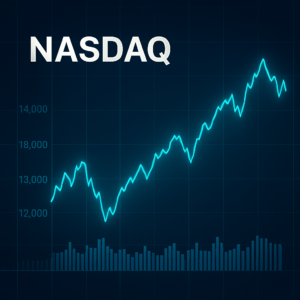Stay updated with the latest Nasdaq trends. Learn how the Nasdaq Composite Index impacts tech stocks and the broader market.
Nasdaq Today: Insights, Trends, and Market Updates

Introduction
The Nasdaq Composite Index is a key benchmark in the world of technology and innovation. Known for being heavily weighted toward tech stocks, the Nasdaq represents some of the most influential companies in the global economy. Investors closely watch the Nasdaq to gauge the performance of high-growth industries.
What Is the Nasdaq?
The Nasdaq Composite Index tracks over 3,000 stocks listed on the Nasdaq stock exchange. It includes companies from various sectors, with a strong emphasis on technology, biotech, and telecommunications.
Key Features of the Nasdaq:
-
Tech-Heavy Index: Dominated by major tech giants like Apple, Microsoft, Amazon, and Tesla.
-
Market-Cap Weighted: Companies with larger market values have a greater influence on the index.
-
Global Influence: Includes companies based both inside and outside the U.S.
-
Volatility: Often more volatile compared to other indices like the Dow Jones or S&P 500.
Why Is the Nasdaq Important?
The Nasdaq Composite serves as a barometer for the technology sector and growth stocks. Its movements are closely linked to tech innovation, market sentiment, and economic developments.
Reasons to Monitor the Nasdaq:
-
Tech Sector Health: A rising Nasdaq often indicates robust growth in technology.
-
Economic Confidence: When the Nasdaq is strong, investors feel optimistic about innovation and consumer demand.
-
Investment Decisions: A decline can signal caution, especially for tech-heavy portfolios.
-
Market Sentiment: Acts as an indicator of risk appetite among investors.
How to Invest in the Nasdaq
Investors can gain exposure to the Nasdaq Composite through various financial products:
-
ETFs: Such as the Invesco QQQ Trust (QQQ), which tracks the Nasdaq-100.
-
Index Funds: Like the Fidelity Nasdaq Composite Index Fund (FNCMX).
-
Tech Stocks: Direct investment in companies like Apple, Amazon, or Alphabet.
-
Options and Futures: For more advanced trading strategies.
Benefits of Nasdaq Investments:
-
High Growth Potential: Many innovative companies are listed on the Nasdaq.
-
Diversification: Access to a wide range of tech and biotech stocks.
-
Liquidity: High trading volume makes it easy to buy and sell.
Current Nasdaq Trends
As of the latest data, the Nasdaq is experiencing:
-
Volatility: Due to tech earnings reports and global economic shifts.
-
Bullish Momentum: Driven by the strong performance of AI and cloud computing stocks.
-
Sector Rotation: Investors are moving between tech and healthcare as economic conditions change.
Nasdaq vs. Other Major Indices
Compared to the Dow Jones and S&P 500, the Nasdaq is unique due to its heavy tech focus.
Comparative Analysis:
-
Tech Dominance: Unlike the diversified S&P 500, the Nasdaq is tech-centric.
-
Volatility: More prone to sharp movements than the Dow Jones.
-
Growth vs. Stability: Nasdaq often leads in growth periods, while Dow is seen as more stable.
-
Global Influence: While the Dow is largely U.S.-centric, the Nasdaq includes international companies.
Tips for Analyzing the Nasdaq
-
Monitor Tech Earnings: Major companies like Apple and Microsoft significantly influence the index.
-
Watch for Innovation Trends: Developments in AI, biotech, and software can cause rapid changes.
-
Economic News: Interest rate changes and inflation reports can impact tech valuations.
-
Follow Key Events: Earnings seasons, tech conferences, and policy announcements are crucial.
Conclusion
The Nasdaq Composite Index is a powerful indicator of technological innovation and economic confidence. By keeping an eye on its trends and understanding its structure, investors can make informed decisions in a rapidly evolving market. Whether you’re investing directly or through ETFs, staying updated with Nasdaq movements is essential for any modern portfolio.
What’s your take on the latest Nasdaq trends? Share your thoughts below!